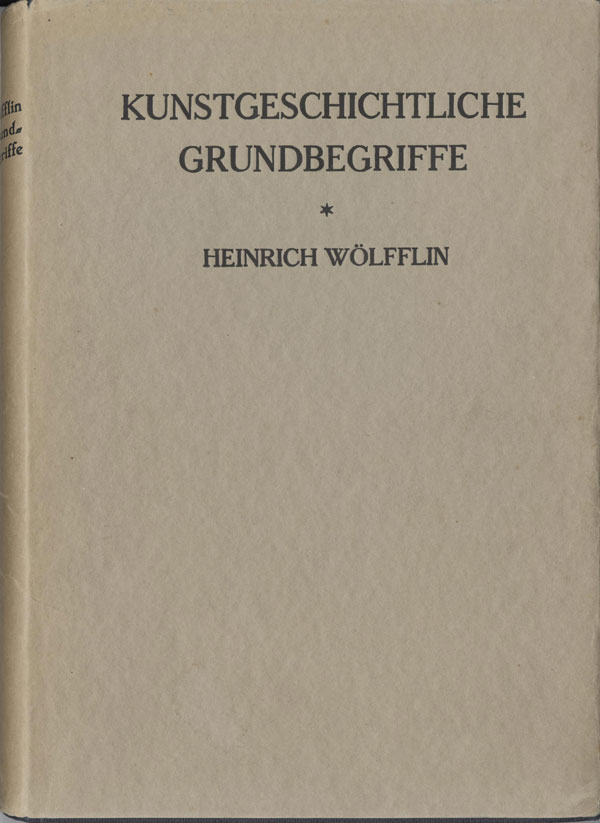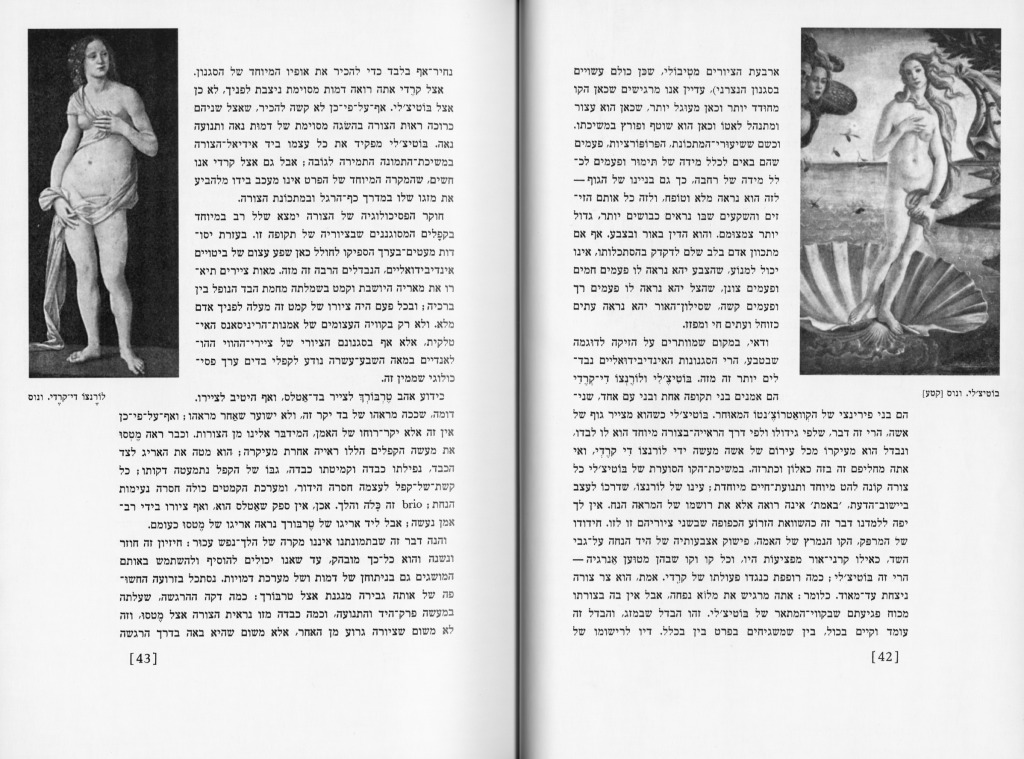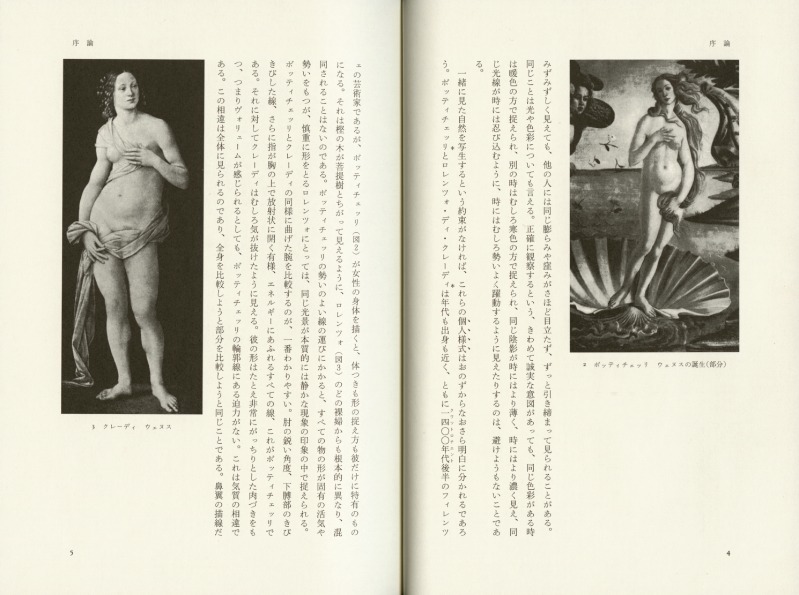The Book

The 1915 Grundbegriffe had a simple leather cover with gilded letters, and was protected at point of sale with a plain grey dust jacket echoing the design of the stamped leather cover. Inside, the design was of a highly readerly work, typographically not too dense, with the illustrations interspersed in the text in the contemporary fashion. There were 111 illustrations in the first edition, more than half of which were designed to be seen as comparisons on a single page spread.
Although produced in the middle of World War I, when paper shortages prevented Wölfflin from even contemplating a second volume just of illustrations, the book was never redesigned in times of plenty. Remarkably, the design of the original 1915 edition, with its image comparisons, was carried forward in many of the translations [photos of Hebrew, Spanish, Japanese editions here] because Wölfflin’s brother Ernst Wölfflin (an eye surgeon), who was in charge of his literary estate until his death in 1960, insisted upon maintaining it when granting rights for translation.



The original 111 photographs used for the publication of the Grundbegriffe, or versions of them, were in Joseph Gantner’s possession up until the 1960s, after which they became untraceable. Searches were conducted in the photo collection at the Kunsthistorisches Institut of the University of Zurich, the Schwabe Verlag, the Fototek of the Zentralinstitut in Munich (where some photographs from the university collection have migrated), and the papers of Heinrich Wölfflin, Ernst Wölfflin and Joseph Gantner, have turned up nothing. Wölfflin seems to have left behind his teaching images when he left the Humboldt University in Berlin for the Ludwig-Maximilians-Universität in Munich in 1911 and when he left Munich for the University of Zurich in 1924. There has been no comprehensive effort to identify Wölfflin’s photo archive in Berlin or Munich. Wölfflin left many of his books and photographs to the University of Zurich, where he ended his teaching career. While his glass slides and standard-size photos have become interspersed in the photo collection (now archived) of the Kunsthistorisches Institut, dozens of large black folders containing large format prints [photo of black folders], and organized according to his major fields of interest, appear to preserve a part of Wölfflin’s photo library relatively intact. While it is doubtful that Wölfflin labelled his own slides, some of the photographs in these folios do bear his distinctive handwriting. A project at the University of Zurich to digitize selected glass slides is now underway.